
Wood is a porous and fibrous structural tissue found in the stems and roots of trees and other woody plants. It is an organic material, a natural composite of cellulose fibers that are strong in tension and embedded in a matrix of lignin that resists compression. Wood is sometimes defined as only the secondary xylem in the stems of trees, or it is defined more broadly to include the same type of tissue elsewhere such as in the roots of trees or shrubs. In a living tree it performs a support function, enabling woody plants to grow large or to stand up by themselves. It also conveys water and nutrients between the leaves, other growing tissues, and the roots. Wood may also refer to other plant materials with comparable properties, and to material engineered from wood, or wood chips or fiber.

Dendrochronology is the scientific method of dating tree rings to the exact year they were formed. As well as dating them this can give data for dendroclimatology, the study of climate and atmospheric conditions during different periods in history from wood.

The vascular cambium is the main growth tissue in the stems and roots of many plants, specifically in dicots such as buttercups and oak trees, gymnosperms such as pine trees, as well as in certain vascular plants. It produces secondary xylem inwards, towards the pith, and secondary phloem outwards, towards the bark. In herbaceous plants, it occurs in the vascular bundles which are often arranged like beads on a necklace forming an interrupted ring inside the stem. In woody plants, it forms a cylinder of unspecialized meristem cells, as a continuous ring from which the new tissues are grown. Unlike the xylem and phloem, it does not transport water, minerals or food through the plant. Other names for the vascular cambium are the main cambium, wood cambium, or bifacial cambium.

In the oil and gas industry, the term wireline usually refers to a cabling technology used by operators of oil and gas wells to lower equipment or measurement devices into the well for the purposes of well intervention, reservoir evaluation, and pipe recovery.
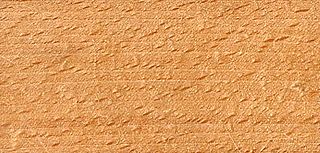
Hardwood is wood from dicot trees. These are usually found in broad-leaved temperate and tropical forests. In temperate and boreal latitudes they are mostly deciduous, but in tropics and subtropics mostly evergreen. Hardwood contrasts with softwood.
Electroacupuncture is a form of acupuncture where a small electric current is passed between pairs of acupuncture needles. According to some acupuncturists, this practice augments the use of regular acupuncture, can restore health and well-being, and is particularly good for treating pain. There is evidence for some efficacy in treating moderate post-chemotherapy vomiting, but not for acute vomiting or delayed nausea severity.
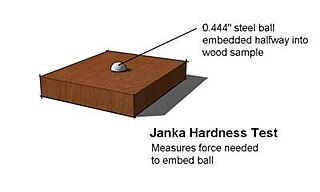
The Janka hardness test measures the resistance of a sample of wood to denting and wear. It measures the force required to embed an 11.28 millimetres (0.444 in) diameter steel ball halfway into a sample of wood. A common use of Janka hardness ratings is to determine whether a species is suitable for use as flooring. For hardwood flooring, the test usually requires a 2" x 6" sample with a thickness of at least 6-8mm, and the most commonly used test is the ASTM D1037. When testing wood in lumber form the Janka test is always carried out on wood from the trunk of the tree and the standard sample is at 12% moisture content and clear of knots.

Ecological thinning is a silvicultural technique used in forest management that involves cutting trees to improve functions of a forest other than timber production.
This glossary of woodworking lists a number of specialized terms and concepts used in woodworking, carpentry, and related disciplines.

Heinrich von Recklinghausen was a German physician and scientist from Würzburg.
Forest inventory is the systematic collection of data and forest information for assessment or analysis. An estimate of the value and possible uses of timber is an important part of the broader information required to sustain ecosystems. When taking forest inventory the following are important things to measure and note: species, diameter at breast height (DBH), height, site quality, age, and defects. From the data collected one can calculate the number of trees per acre, the basal area, the volume of trees in an area, and the value of the timber. Inventories can be done for other reasons than just calculating the value. A forest can be cruised to visually assess timber and determine potential fire hazards and the risk of fire. The results of this type of inventory can be used in preventive actions and also awareness. Wildlife surveys can be undertaken in conjunction with timber inventory to determine the number and type of wildlife within a forest. The aim of the statistical forest inventory is to provide comprehensive information about the state and dynamics of forests for strategic and management planning. Merely looking at the forest for assessment is called taxation.
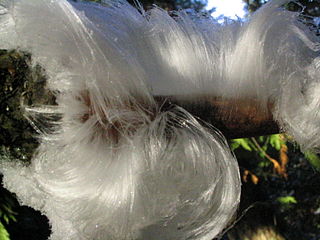
Hair ice, also known as ice wool or frost beard, is a type of ice that forms on dead wood and takes the shape of fine, silky hair. It is somewhat uncommon, and has been reported mostly at latitudes between 45–55 °N in broadleaf forests. The meteorologist and discoverer of continental drift, Alfred Wegener, described hair ice on wet dead wood in 1918, assuming some specific fungi as the catalyst, a theory mostly confirmed by Gerhart Wagner and Christian Mätzler in 2005. In 2015, the fungus Exidiopsis effusa was identified as key to the formation of hair ice.

A measuring instrument is a device for measuring a physical quantity. In the physical sciences, quality assurance, and engineering, measurement is the activity of obtaining and comparing physical quantities of real-world objects and events. Established standard objects and events are used as units, and the process of measurement gives a number relating the item under study and the referenced unit of measurement. Measuring instruments, and formal test methods which define the instrument's use, are the means by which these relations of numbers are obtained. All measuring instruments are subject to varying degrees of instrument error and measurement uncertainty.

Resin canals or resin ducts are elongated, tube-shaped intercellular spaces surrounded by epithelial cells which secrete resin into the canal. These canals are orientated longitudinally and radially in between fusiform rays. They are usually found in late wood: denser wood grown later in the season. Resin is antiseptic and aromatic and prevents the development of fungi and deters insects.
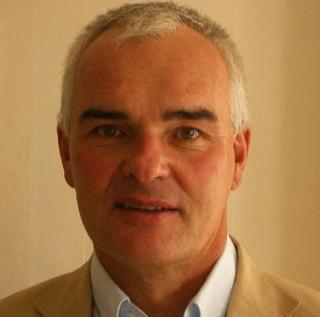
Klaus F. Müller is a German dentist and European pioneer of modern dental implantology. He grew up in Sinn in Hesse, Germany, where he was born on July 20, 1949.
Harald Holz is a German philosopher, logician, mathematician (autodidact), poet and novelist. The focal point of his work was and is the development of a philosophy of great sincerity.
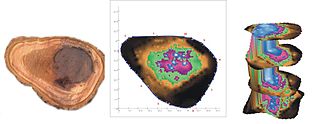
Acoustic or stress wave tomography is a non-destructive measurement method for the visualization of the structural integrity of a solid object. It is being used to test the preservation of wood or concrete, for example. The term acoustic tomography refers to the perceptible sounds that are caused by the mechanical impulses used for measuring. The term stress wave tomography describes the measurement method more accurately.
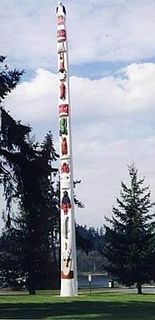
The conservation and restoration of totem poles is a relatively new topic in the field of art conservation. Those who are custodians of totem poles include Native American communities, museums, cultural heritage centers, parks or national parks, camp grounds or those that belong to individuals. Conservation activities include the historical research and context of totem poles, studying materials and manufacture, performing assessments, documentation and treatments. This field can pertain to conservator-restorers, Native Americans, curators, collection managers, registrars, park rangers and city planners.
Johannes F. Finsterbusch was a German mathematician, known for his work on projective geometry.














